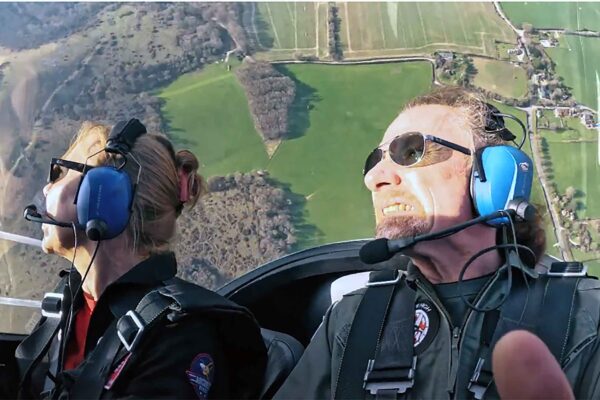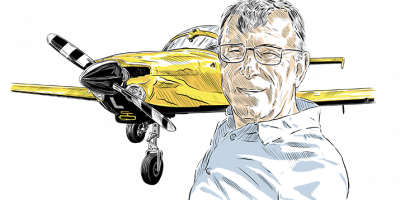I am Cat Burton, your new safety editor. I’m a veteran of a 45-year career as a British Airways captain, and now senior flight instructor at Cardiff for a professional flight training school, so I shall be trying to bring my wide perspective to these pages. I’ll look at incidents and analyse what went wrong, and what might have saved the day. I emphasise that these are my own analyses. They may agree, or disagree, with any official accident report, but I will try to draw lessons we can all learn from. Some may be brief and some much longer, depending on what suits the particular incident.
For my first incident, I thought I’d look at an aircraft accident which I came to know very well, as I lost a good friend. Although it’s more than 10 years ago, it’s the sort of scenario that can easily reoccur, especially since we’re at the start of the flying season for many pilots.
The incident was the mid-air collision over Shoreham-by-Sea on 4 July 2011 between a Van’s RV-6A and a Diamond DA40D. The two aircraft collided, in good weather. The Diamond was rejoining the circuit, on crosswind, while the Van’s was on downwind. The Van’s was rendered uncontrollable by the collision and the pilot lost his life. The Diamond was successfully landed without a propeller or gearbox, on the outfield at Shoreham Airport.
The Van’s was being flown after an extended period of maintenance. Five such hours were called for and the pilot, having completed all the tests required, was burning remaining hours in the circuit. He was a friend of the owner with considerable experience of Van’s aircraft, being the builder and owner of his own RV-7, and approved by the LAA for such test flying.
The Diamond was being operated by a school that specialised in training flight instructors, both initially and for revalidation and renewal and upgrade. The student was a staff instructor upgrading his qualifications.
The instructor trainer was pilot in command and in the left seat. The student instructor was in the right seat. This is normal on such flights as the instructor trainer acts as student for training purposes. At the time of the collision, the pilot in the right seat was flying the aircraft and making the radio calls.
The Van’s called for rejoin at 1519:10 and was given a crosswind join. The pilot requested to enter the circuit to complete the required hours.
The Diamond called for rejoin at 1522:20 and was also given a crosswind join.
“The Diamond was still on crosswind when there was a huge bang and the aircraft rolled to the left”
Shoreham ATC was operating both tower and approach on a single combined frequency.
At 1522:30, ATC told the Diamond to report north abeam Worthing pier and to look out for an RV-6 on the same join. The Diamond acknowledged and, immediately after, the Van’s reported that it had already joined crosswind and was about to turn downwind. ATC told the Van’s to call downwind, which the Van’s did at 1523.
At 1524:30, the Van’s reported final for a touch-and-go. At 1524:50 it was cleared for a touch-and-go. A Piper PA28 was then cleared to line up after the RV-6 on final.
At 1525:10, the Diamond reported abeam Worthing Pier and was told to report crosswind. ATC also advised the Diamond that there were ‘two in the circuit’.
At 1526, the Piper was cleared for take-off with a left turnout. The radio was then occupied for 50 seconds by two aircraft asking for joining instructions and one receiving them.
At 1526:50, the Diamond reported crosswind. Based on the first circuit flown by the Van’s, the ATCO’s mental model had the Van’s ahead of the Diamond and already on downwind when the Diamond reported crosswind.
The Diamond was still on crosswind when there was a huge bang and the aircraft rolled to the left. To confirm who was flying the aircraft, the student instructor said, “I have control,” and recovered the aircraft to a glide attitude. He turned downwind and saw that he had no prop, plus damage to the left wing. He elected to land the aircraft on non active Runway 25 with no further damage. While the student flew the circuit, the instructor trainer saw the Van’s descending in a wide spiral into a large open space near the airfield called Shoreham Rec.
“So what went wrong? And what could have avoided this collision”
The ATCO had continued to issue joining instructions and then had cleared a Cessna to touch and go before a garbled Mayday call was received at 1527:25. The controller asked for a repeat but an unidentified caller said, “He’s gone in behind the airfield.”
The radar tracks show that as the Diamond was crossing the runway upwind end, the Van’s was turning downwind. They were at approximately the same altitudes, with the Van’s being up to 25ft above on some returns. The radar also shows that the Van’s would have been observed on a constant bearing throughout.
All three pilots were experienced and current. The Van’s pilot was a retired airline pilot who had retired in 2003 and amassed 600 or so Van’s hours after retirement. The commander of the Diamond had been instructing for more than 30 years. The trainee was a current instructor with 1,200 hours upgrading to instrument instructor. The ATCO had been qualified at Shoreham for more than 12 years and had been on duty for 58 minutes, supporting the operational ATCO before taking over the operational seat at 1521. She was providing a combined aerodrome and procedural approach service without radar.
So what went wrong? And what could have avoided this collision.
All four parties were experienced professionals, well rested and capable.
None of them were directly to blame but any could have done that one extra thing which could have prevented the collision.
The ATCO said there were two in the circuit. In fact, there were two in the circuit plus one departing. Those extra three words were not called for by the manual of ATC but their inclusion might have improved the mental model of the Diamond pilot.
The Diamond, expecting to find two in the circuit, saw two, but one was the departing aircraft. Subconsciously, did that complete their mental model? Their report says they continued to maintain a good lookout, but the Van’s was on a constant bearing. It’s a truth that collisions only happen when aircraft are closing on a constant bearing. It’s also true that we see movement better than stationary targets.
And the Van’s. Normally a very precise pilot. Could his mental model have been better if he’d heard the Diamond report crosswind (which was immediately followed by two joiners’ calls). Could that have alerted him to the potential conflict?
I believe any one of those could have prevented this tragic accident.






